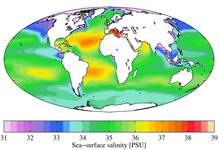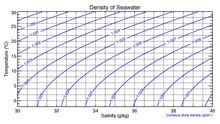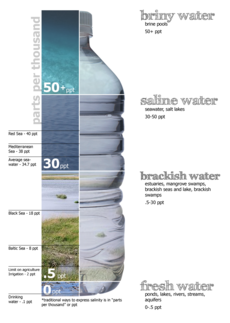He li o pol is Spherical Helium recycling
| ||||||||||||||
| mꜣꜥ-ḫrw ("True of Voice") in hieroglyphs | ||||||||||||||
|---|---|---|---|---|---|---|---|---|---|---|---|---|---|---|

Maa Kheru (Ancient Egyptian: mꜣꜥ ḫrw) is a phrase meaning "true of voice" or "justified"[1] or "the acclaim given to him is 'right'".[2] The term is involved in ancient Egyptian afterlife beliefs, according to which deceased souls had to be judged morally righteous. Once the soul had passed the test, the Weighing of the Heart, they were judged to be mꜣꜥ ḫrw and was allowed to enter the afterlife.[1]
The phrase was often used to denote someone who had died and become a god, placed after the name of the individual in question. As such, it is frequently found in inscriptions in Egyptian tombs and royal mortuary temples, especially as part of an introductory clause for autobiographical inscriptions celebrating the tomb or temple owner's achievements in life.[3]
See also[edit]
- Maat, the Egyptian concept of truth, order, and justice (from the same root)
Seawater
Seawater, or sea water, is water from a sea or ocean. On average, seawater in the world's oceans has a salinity of about 3.5% (35 g/L, 35 ppt, 600 mM). This means that every kilogram (roughly one liter by volume) of seawater has approximately 35 grams (1.2 oz) of dissolved salts (predominantly sodium (Na+
) and chloride (Cl−
) ions). The average density at the surface is 1.025 kg/L. Seawater is denser than both fresh water and pure water (density 1.0 kg/L at 4 °C (39 °F)) because the dissolved salts increase the mass by a larger proportion than the volume. The freezing point of seawater decreases as salt concentration increases. At typical salinity, it freezes at about −2 °C (28 °F).[1] The coldest seawater still in the liquid state ever recorded was found in 2010, in a stream under an Antarctic glacier: the measured temperature was −2.6 °C (27.3 °F).[2]
Seawater pH is typically limited to a range between 7.5 and 8.4.[3] However, there is no universally accepted reference pH-scale for seawater and the difference between measurements based on different reference scales may be up to 0.14 units.[4]
Properties[edit]
Salinity[edit]

Although the vast majority of seawater has a salinity of between 31 and 38 g/kg, that is 3.1–3.8%, seawater is not uniformly saline throughout the world. Where mixing occurs with freshwater runoff from river mouths, near melting glaciers or vast amounts of precipitation (e.g. monsoon), seawater can be substantially less saline. The most saline open sea is the Red Sea, where high rates of evaporation, low precipitation and low river run-off, and confined circulation result in unusually salty water. The salinity in isolated bodies of water can be considerably greater still – about ten times higher in the case of the Dead Sea. Historically, several salinity scales were used to approximate the absolute salinity of seawater. A popular scale was the "Practical Salinity Scale" where salinity was measured in "practical salinity units (PSU)". The current standard for salinity is the "Reference Salinity" scale [6] with the salinity expressed in units of "g/kg".
Density[edit]
The density of surface seawater ranges from about 1020 to 1029 kg/m3, depending on the temperature and salinity. At a temperature of 25 °C, the salinity of 35 g/kg and 1 atm pressure, the density of seawater is 1023.6 kg/m3.[7][8] Deep in the ocean, under high pressure, seawater can reach a density of 1050 kg/m3 or higher. The density of seawater also changes with salinity. Brines generated by seawater desalination plants can have salinities up to 120 g/kg. The density of typical seawater brine of 120 g/kg salinity at 25 °C and atmospheric pressure is 1088 kg/m3.[7][8]
The Eye of Ra was involved in many areas of ancient Egyptian religion, including in the cults of the many goddesses who are equated with it. Its life-giving power was celebrated in temple rituals, and its dangerous aspect was invoked in the protection of the pharaoh, of sacred places, and of ordinary people and their homes.
Origins[edit]
The Egyptians often referred to the sun and the moon as the "eyes" of particular gods. The right eye of Ra-Horus (merged into the god Ra-Horakhty), for instance, was equated with the sun, and his left eye equated with the moon. At times the Egyptians called the lunar eye the "Eye of Horus" and called the solar eye the "Eye of Ra"—Ra being the preeminent sun god in ancient Egyptian religion.[1] Both eyes were represented by the wedjat symbol, a stylized human eye with the facial markings of the falcon that signified Horus.[2] The Egyptologist Richard H. Wilkinson believes the two Eyes of Horus gradually became distinguished as the lunar Eye of Horus and the solar Eye of Ra;[3] however, Rolf Krauss argues that no text equates the Eyes of Horus with the sun and moon until late in Egyptian history, so the Eye of Horus must have originally had some other significance.[4]
Because many concepts in Egyptian belief are fluid, the roles of the two eyes frequently overlapped.[1] One such area of overlap is that in myth, both Horus and Ra lose their respective eyes. Katja Goebs argues that the myths surrounding the two eyes are based around the same mytheme, or core element of a myth, and that "rather than postulating a single, original myth of one cosmic body, which was then merged with others, it might be more fruitful to think in terms of a (flexible) myth based on the structural relationship of an Object that is missing, or located far from its owner".[5] The Pyramid Texts from the Old Kingdom (c. 2686–2181 BC), one of the earliest sources for Egyptian myth, mention both the Eye of Horus[6] and the Eye of Ra.[7]


.jpg)






.png)

Comments
Post a Comment
No Comment